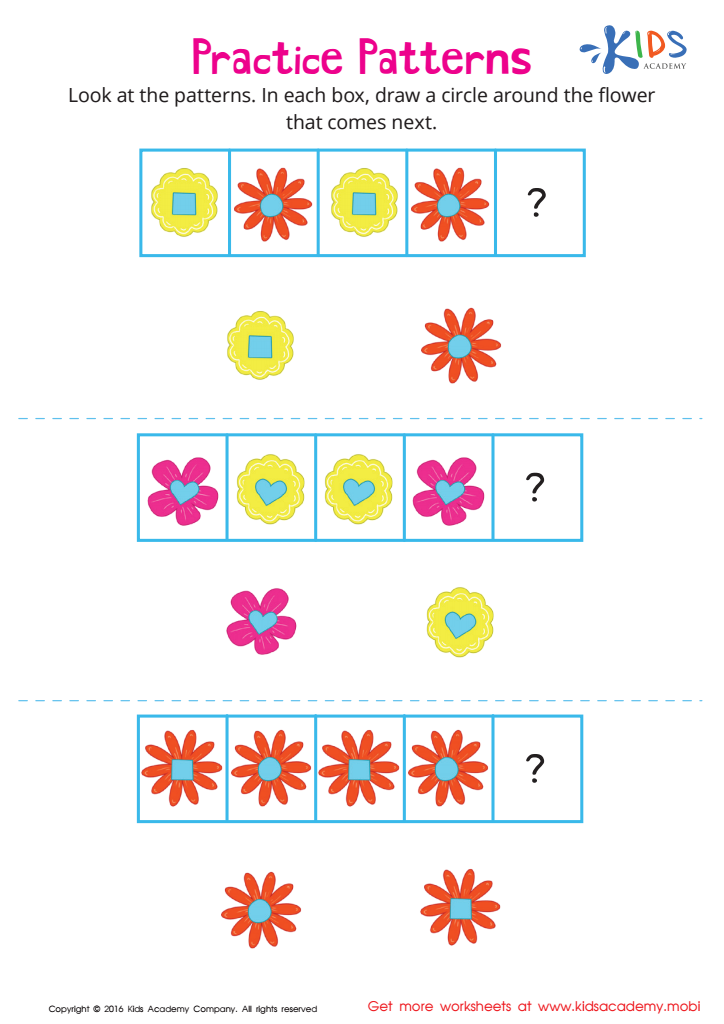Normal Patterns Worksheets for Ages 3-8
5 filtered results
-
From - To
Explore our engaging Normal Patterns Worksheets designed for children aged 3-8! These worksheets introduce young learners to the fascinating world of patterns, an essential concept in early math education. Through colorful illustrations and fun activities, children will practice recognizing, extending, and creating patterns while developing crucial cognitive and fine motor skills. Perfect for home or classroom use, our resources promote interactive learning and help children build a strong foundation in mathematics. Get started today and watch your child excel in recognizing shapes, colors, and sequences, making math fun and approachable! Boost their confidence in learning with our carefully crafted worksheets.
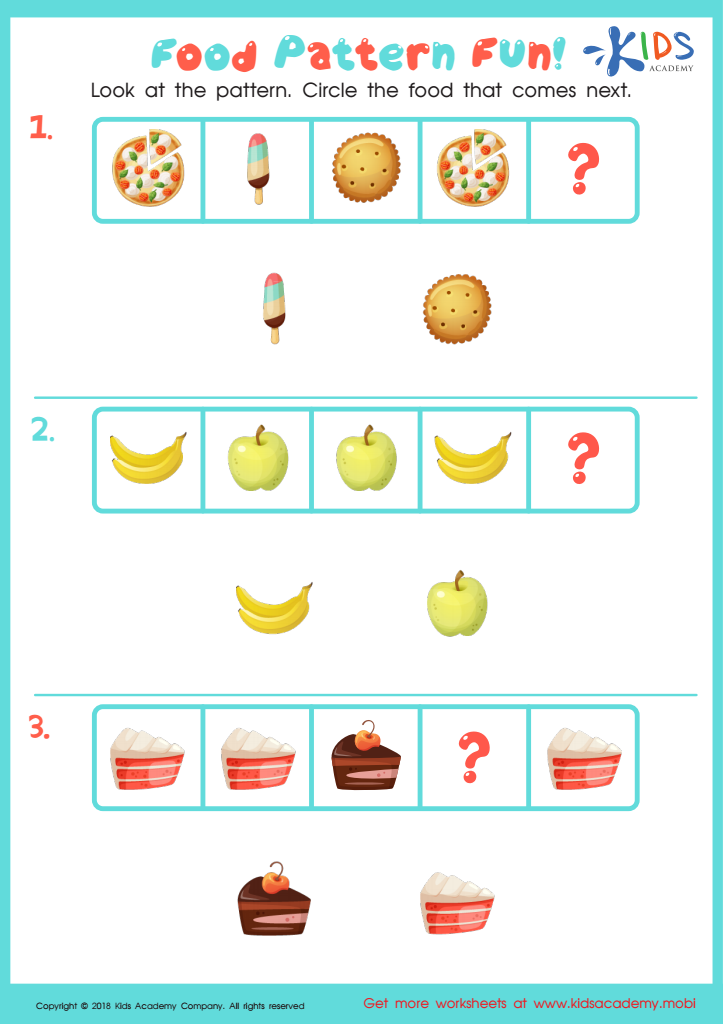

Food Pattern Fun Worksheet
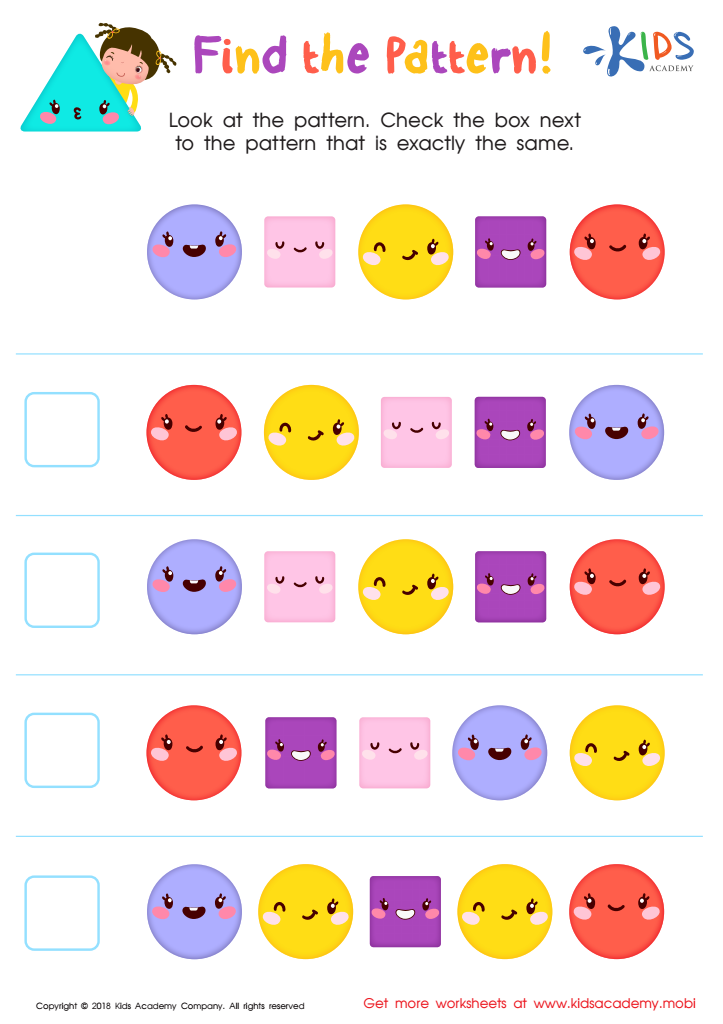

Find the Pattern Worksheet
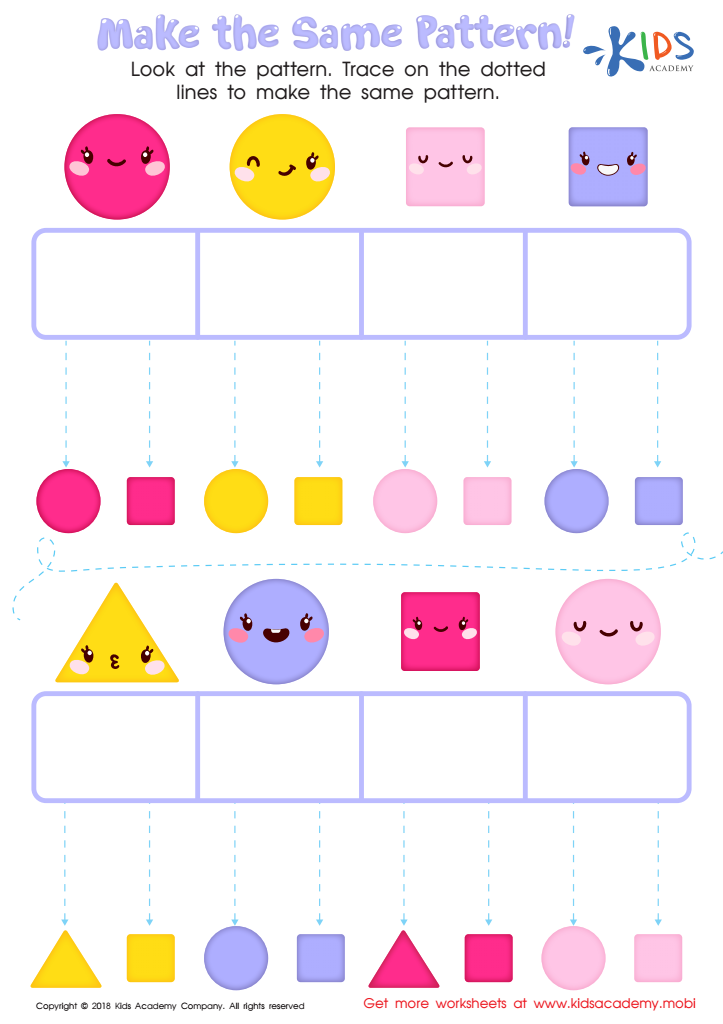

Make the Same Pattern Worksheet
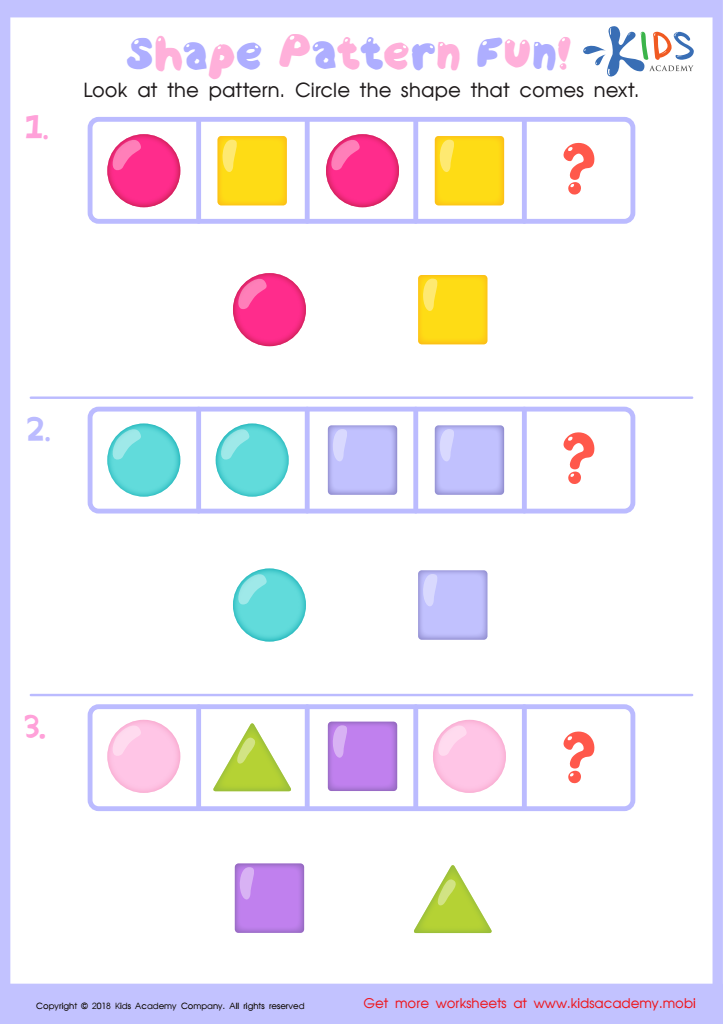

Shape Pattern Fun Worksheet
Understanding normal developmental patterns for children aged 3 to 8 is crucial for both parents and teachers as it serves as a roadmap for a child's growth. During these formative years, children experience significant cognitive, social, emotional, and physical development. By being aware of what is considered typical, adults can identify and support children’s learning needs effectively.
Firstly, parents and teachers can create suitable environments that foster masterful development, ensuring that activities match the child’s developmental stage. For example, knowing that 3-year-olds thrive in imaginative play while 6-year-olds benefit from more structured tasks helps adults provide tailored learning experiences.
Secondly, awareness of these normal patterns allows for the early identification of potential developmental delays or challenges. By recognizing deviations from expected milestones, parents and teachers can intervene sooner, accessing appropriate support services or enrichment programs, ultimately leading to better outcomes for the child.
Moreover, nurturing a child's potential in line with their specific developmental stage can boost their confidence, social interactions, and academic readiness, laying a solid foundation for lifelong learning. Consequently, understanding these normal development patterns is essential in promoting healthy and holistic growth during a critical period of childhood.
 Assign to My Students
Assign to My Students
